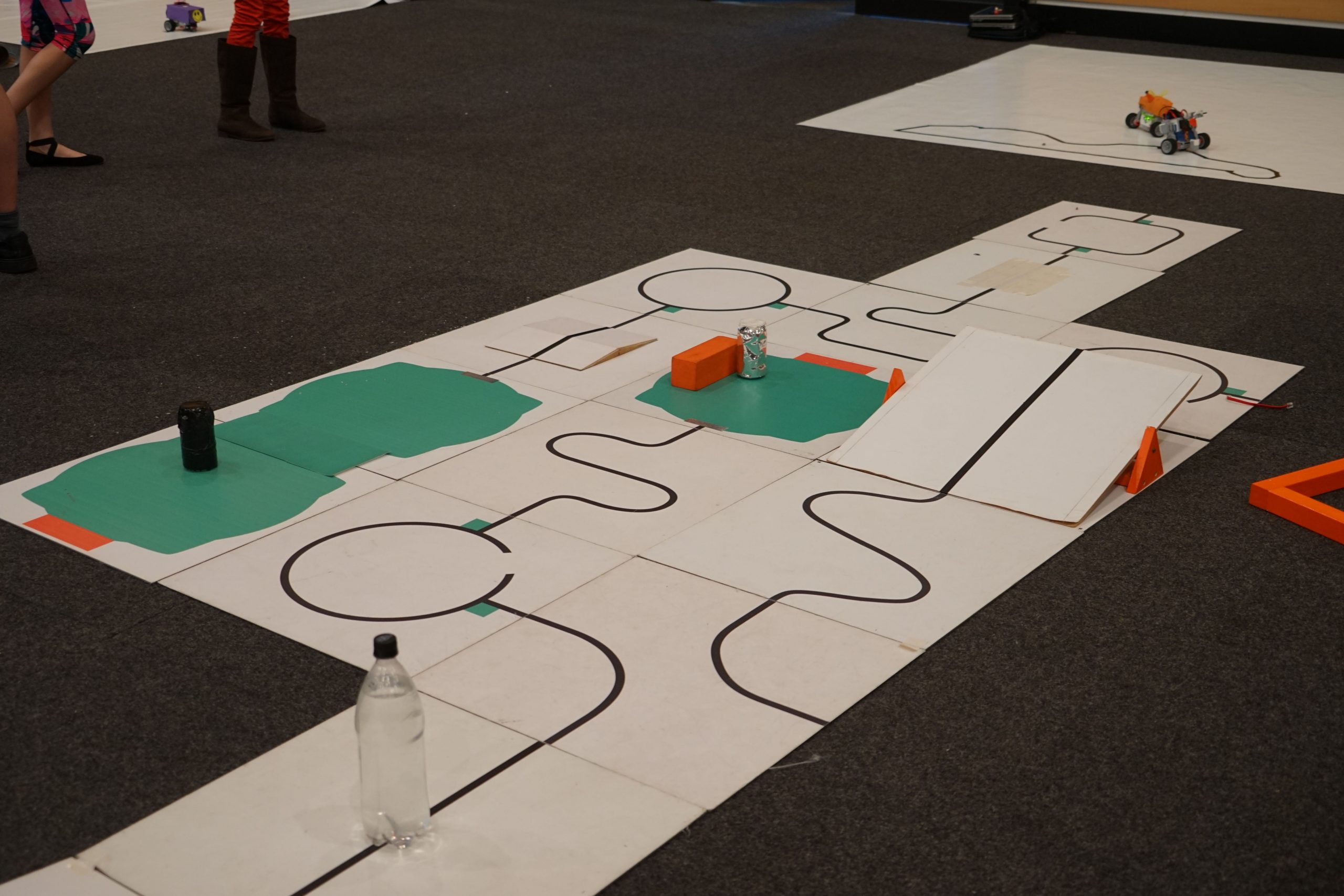Robots compete by following a winding line on a series of tiles to a designated rescue area. On the way the robot could encounter obstacles, bridges and short cut opportunities that will challenge the most intrepid programmer. After negotiating the randomly selected path, the robot arrives at a green coloured area which indicates a chemical spill. While the clock is still ticking the robot must find “the victim” before pushing them out of the chemical spill to safety.
Due to its ease of introduction to the uninitiated, many students choose to use LEGO Mindstorms kits to build and program their robots. Other students select alternative platforms and even build their own microprocessor robots from basic electronic components. A range of sensors can be attached to all of these platforms, including electronic compasses, sonars, light sensors, infrared sensors, and cameras.
There are three divisions of the Rescue Line challenge, each with slightly different rules and levels of difficulty.
The Riley Rover division is the entry-level division for RoboCup Rescue Line. This is open to students in both Primary and Secondary school aged students.
The Primary Division is the intermediate division for RoboCup Rescue Line for Primary School aged students. All members of the team must be in primary school.
The Secondary division is next level up-level division for RoboCup Rescue Line. Robots compete on the same field as the Primary Rescue Line and play under the same rules, however, when Secondary Rescue teams reach the chemical spill they need to find “the victim” and control it (contain or grab) and then maneuver it out of the chemical spill, rather than simply push out of the spill area.
The open division is suitable for experienced primary and secondary students. Robots use the same tiles as Primary/Secondary Rescue, however, this time the robots can encounter some extra tiles including the challenging “gridlock”. Once in the chemical spill, the Open Rescue robot is required to find and lift the victim out to the safety of a raised platform. Finally they need to save the robot and exit the chemical spill from where they entered. A true test of a robot designers ability!
For the first time, RoboCup Junior Australia is offering International Rescue Line at our 2024 Australian Open National Championships. This division will only be available at this event. Visit our dedicated page here for full details.

The rescue field is based on a modular square tile which we can use to make an endless number of different courses for your robots to traverse and also provides us with the ability to add new tiles in the future. We are also introducing a 3rd dimension to the course with bridges, speed bumps and obstacles.
From 2016 the tiles can be as small as 300 mm x 300 mm and with lines of any shape, within boundaries specified in the rules.
Our Platinum National Sponsor, MTA, has some practise equipment available on their website here. Please note this is only one example of how the tiles might be designed, so the rescue courses at your local event may vary.
Make sure you read the latest rules for this challenge. These rules can change from year-to-year.
Check out our Getting Started section for tutorials and more information about how to start making your rescue robots!
Modern Teaching Aids supplies many of the kits and parts you may need to construct a LEGO rescue robot.